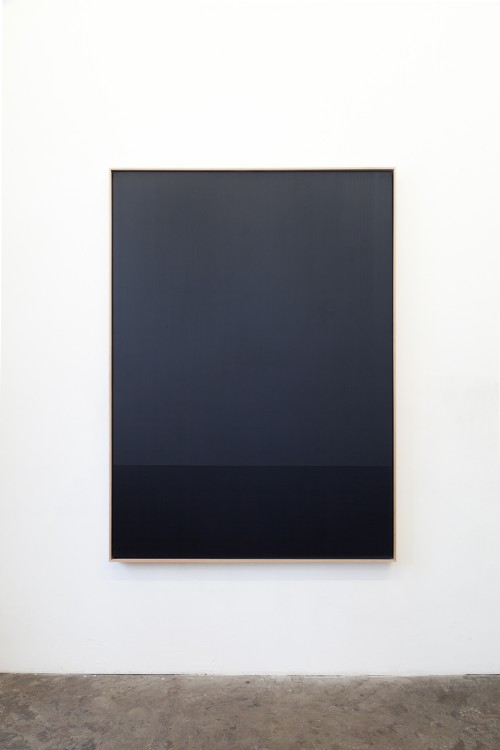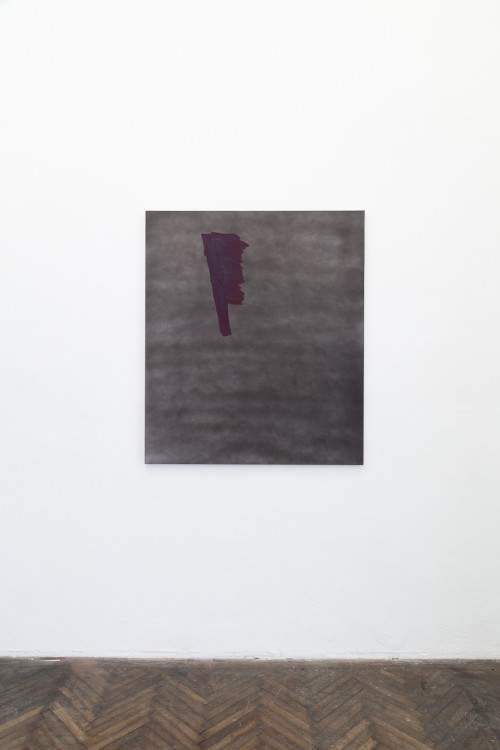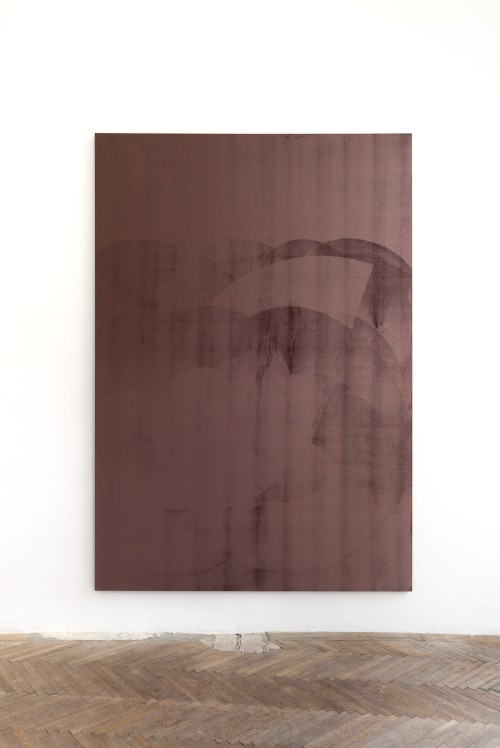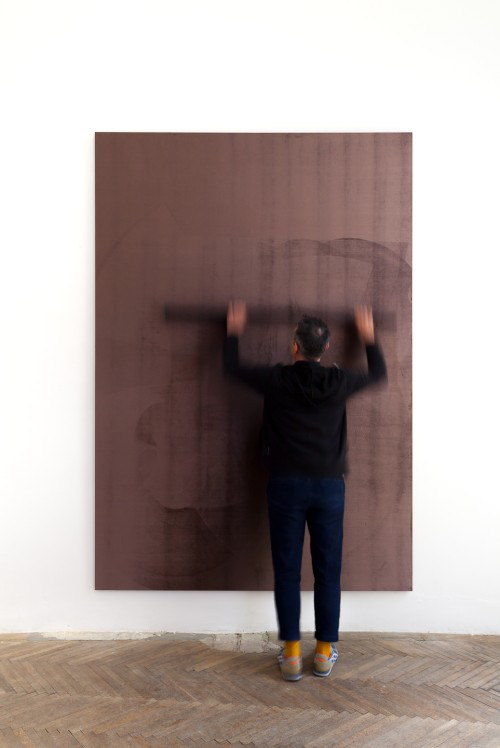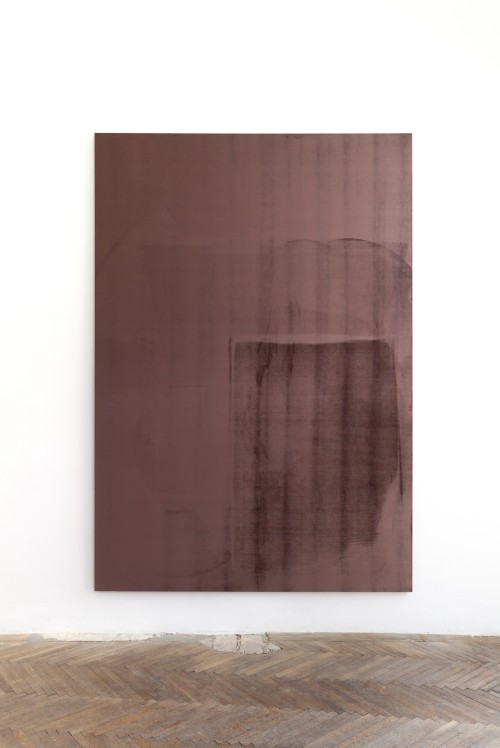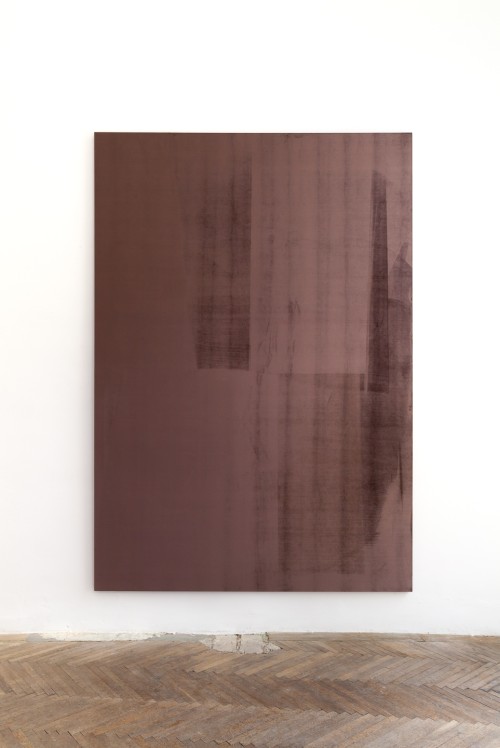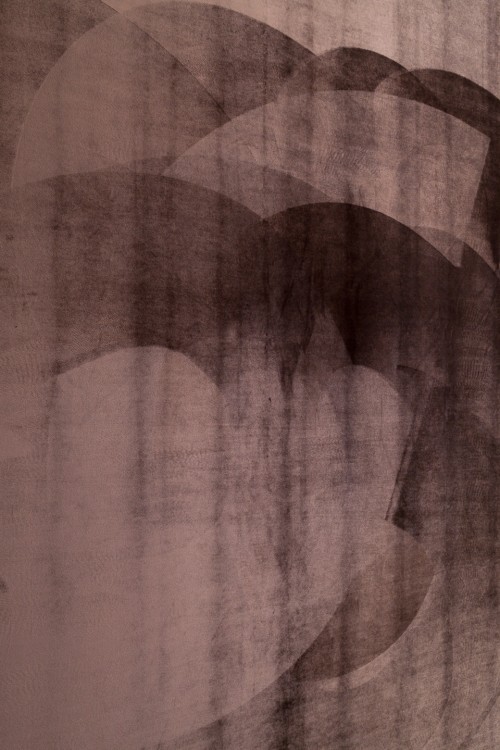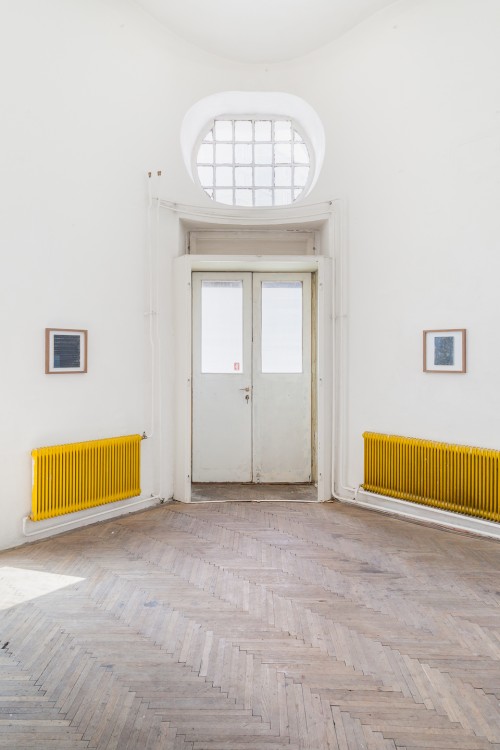escuro
03.05. — 17.05.2019
Eröffnung: 03. Mai 2019, 19 Uhr
Finissage: 17. Mai 2019, 19 Uhr
It is inaccurate to describe Fernando Mesquita as a “painter”. Ever active in
performative and curatorial projects (the distinction of these two are often
blurred in his works), painting does not even constitute the majority of his
output. Yet, I’d like to insist on the centrality of painting in his practice.
As numerous events, exhibitions, performances, and social gatherings testify,
Mesquita has boundless interest in the dynamic of temporal actions and their
resonances, both artistic and human. His paintings give tangible form to this
interest. In other words, painting is the focal point of his diverse artistic
engagements. It is the illuminated spot in a large tableau that keeps the
clamouring elements together.
What is crucial to all of his paintings is the fact of them being worked on.
These pictures ostensibly testify to the worked-on-ness of their surfaces,
though they also possess considerable pictorial qualities. The gestures that
brought these worked-on surfaces into existence have nothing to do with the
heroic gestures and brushstrokes of Abstract Expressionism or Neo-Expressionism
that celebrate the artist’s inflated sense of individuality. In contrast,
Mesquita’s gestures strike one as acknowledgements of the extreme briefness of
the actions that begot his pictures, and fragile attempts to capture these
moments. In this regard, his paintings have something in common with “Last Date”
by Eric Dolphy, a live recording by Dolphy shortly before his untimely death at
the age of 36 in 1964, where he famously said: “When you hear music, after it's
over, it's gone in the air. You can never capture it again.” It is this delicate
immediacy and its extreme elusiveness that Mesquita strives for.
This evanescent nature of mark making is eloquently demonstrated in the two
works from the “Composition” series included in this exhibition. In this ongoing
series, Mesquita puts a piece of synthetic fabric with a napped, velvet-like
texture on a stretcher and gently rubs the fabric’s surface against its hairs to
leave a trace of his hand movement. These traces can easily be erased by rubbing
the fabric in the opposite direction, creating works of exquisite subtlety and
fragility. The marks are temporal in their essence, hairs on a piece of textile
standing toward a wrong direction, and can be made to disappear without any
effort. Mesquita suspends their temporal state and turn them into a painting,
permanently on the cusp of erasure.
Other works in the show also rejoice in the pleasure of mark making, in the act
of capturing the moment when an artistic intention came into contact with the
surface. The title of this exhibition offers a key to understanding how Mesquita
works. Escuro means “dark” in Portuguese, and in darkness, touch replaces vision.
To move in darkness, we fumble. We carefully stretch our hands forward to figure
out what’s ahead of us, the world is suddenly dominated by the nowness of
contact that offers neither future nor the past. It is a state dominated by
tactility and the present. This is an apt metaphor for Mesquita’s practice. His
paintings and drawings demonstrate what pictures could emerge from a commitment
to the momentary contact with pictorial planes. Neither consumed by the zeal for
progress nor haunted by the art history, his is radical abstraction not
overburdened by vision.
Yuki Higashino
